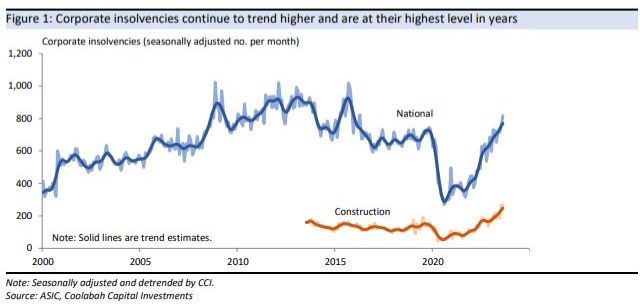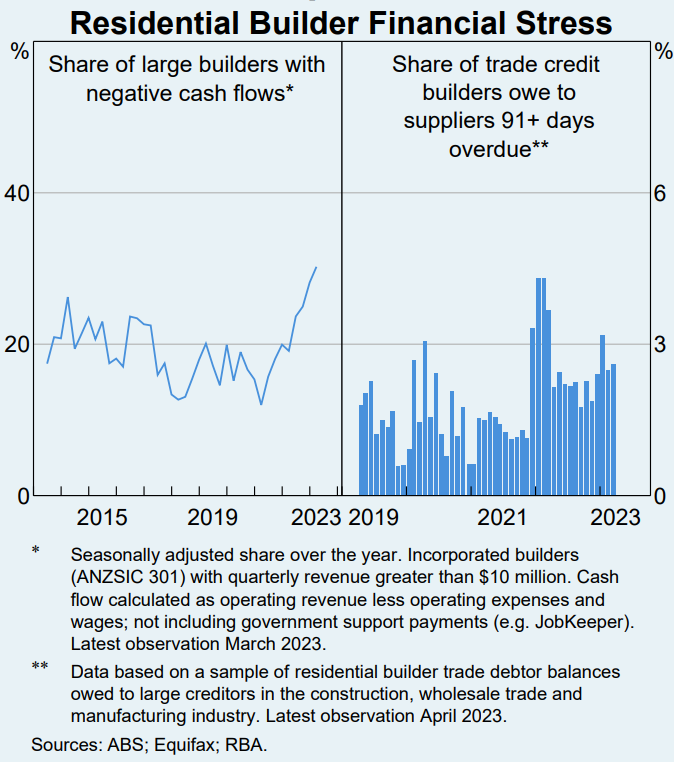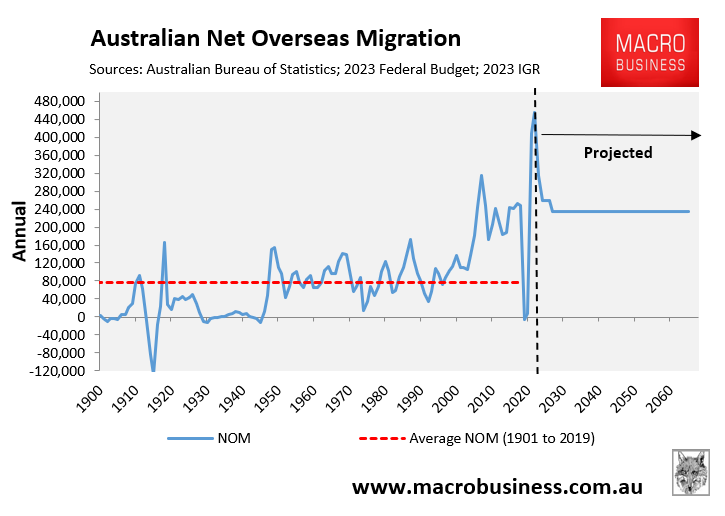Hopes of meeting the Albanese Government’s plan of building 1.2 million homes over five years have taken another hit with the latest corporate insolvency data from the Australian Securities and Investments Commission:
Overall corporate insolvencies hit their highest level since 2015 in August, with construction insolvencies the stand-out:

This surge in construction company insolvencies reflects a combination of surging financing (interest-rate) costs, soaring materials costs, large numbers of fixed price contracts, and labour shortages.
“Relatively high interest rates on corporate loans – about 5½% on average for large businesses and 6½-7¼% for small- and medium-sized companies – and weak economic growth should see insolvencies trend higher next year”, warns Coolabah Capital’s Kieran Davies.
Indeed, the latest Financial Stability Review from the Reserve Bank of Australia showed that around one-third of home builders are losing money:

This reflects “a sharp rise in construction input costs, compounded by costly delays arising from labour and materials shortages, as well as bad weather, [which] has eroded profit margins on existing fixed-price contracts for many residential builders”.
The “good” news is that materials cost inflation is easing, albeit remains too high:

The “bad” news is that Australian home builders now face a new inflation threat via soaring insurance costs:
“The construction sector, in particular, is very reliant on insurance, and while price growth momentum in building materials is slowing, rising insurance premiums will be the next headache the industry will face”, CreditorWatch chief economist Anneke Thompson said.
With construction firms failing at an alarming rate, materials, insurance and financing costs being substantially higher, and a chronic shortage of builders, how can the Albanese Government realistically reach its 1.2 million homes target?
An average of 240,000 new homes must be built annually over five years to meet the government’s housing target.
However, Australia has only ever built more than 220,000 homes in a single year once, in 2017, when it built 223,000. And this was with lower mortgage rates and material prices, as well as a plentiful supply of builders:

Clearly, Australia will never build enough homes to meet the 2023 federal budget’s projected 2.18 million population increase over the five years to 2026-27, which is already being overshot:

Therefore, moderating net overseas migration to historical levels is the only viable solution to Australia’s housing shortage.
Immigration must be lowered to a level compatible with the nation’s ability to supply housing and infrastructure, as well as environmental carrying capacity.
Otherwise, Australia’s housing crisis and living standards will continue to deteriorate.

